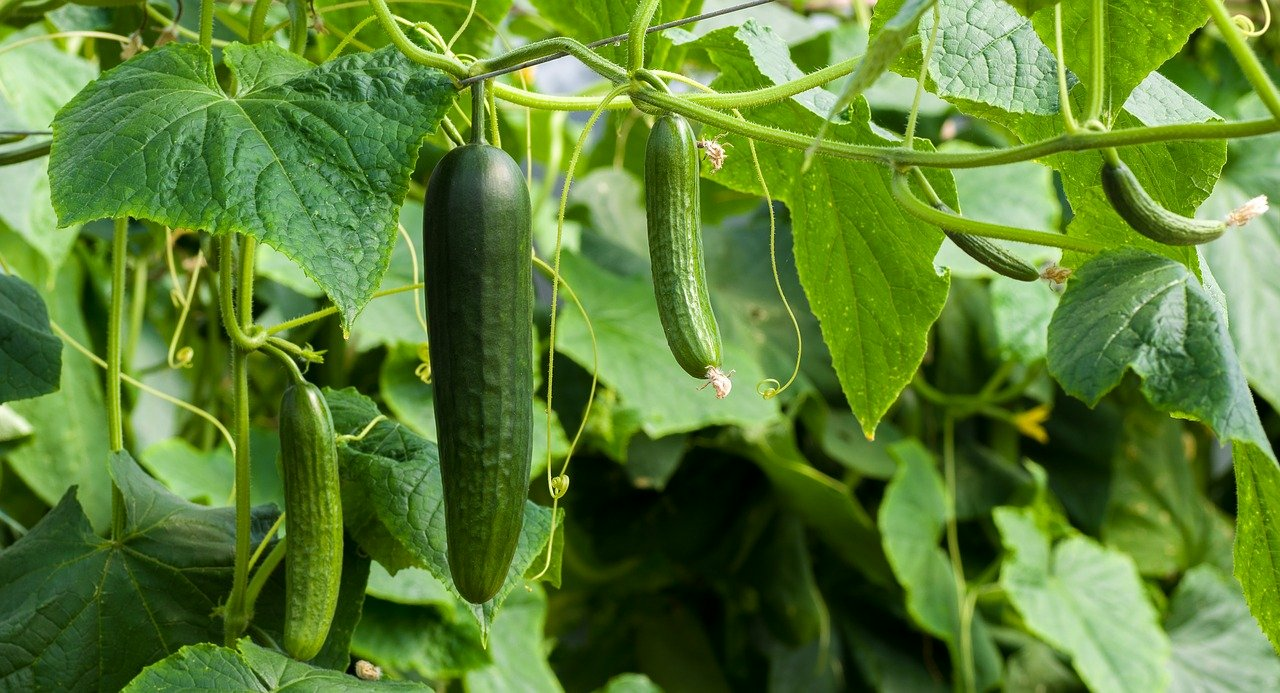
How to Grow and Care for Cucumbers
Whether in a salad or on bread, cucumbers are a great refreshment, especially in summer. Home-grown cucumbers not only taste the best, they also look great in your flower bed. Whether climbing upwards or covering the ground, there is a suitable cucumber for every bed shape and size. There are also different varieties for the greenhouse or open field. Discover here what there is to know about this popular vegetable and how to grow and harvest your own cucumbers.
This Article Contains:
- The Cucumber Plant: Everything You Need to Know
- Cucumber Varieties: Greenhouse vs. Open Field
- Planting Cucumbers: The Right Location & Soil
- Propagating and Planting Out Cucumbers
- Sowing Cucumbers Directly in the Open Field
- Companion Planting Plans With Cucumbers: Ideas and Examples
- Fertilizing and Caring for Cucumbers: Tips for Healthy Plants
- Diseases of Cucumbers
- Grafting Cucumbers for More Robust Plants
- Harvesting and Storing Cucumbers
- Frequently Asked Questions About Planting Cucumbers
Quick Overview
Planting Cucumbers: Location, Soil, Spacing
- Location: full sun, well aerated location
- Soil: loose, humus-rich, nutrient-rich, well aerated
- Planting distance: at least 40 cm/15.7 in
When to Sow and Plant Cucumbers?
- Cultivation on the windowsill:
- Greenhouse: early March (planting from April)
- Outdoors: end of April (planting in mid-May)
- Direct sowing:
- Greenhouse: Beginning of April
- Outdoors: Beginning of May to end of July
Cucumber Plant Care
- Prepare the bed well with slow-release organic fertilizer and fertilize during the season with liquid organic fertilizer such as nettle manure
- Water and mulch regularly
- Attach climbing support
- Cut back cucumbers if necessary
The Cucumber Plant: Everything You Need to Know
The cucumber belongs to the pumpkin family (Cucurbitaceae). It is therefore closely related to Zucchinis, Pumpkins and melons. As the plant family originally comes from tropical regions, it thrives best in humid and warm climates.
The cucumber is said to have been cultivated in India 3500 years ago. Around 2000 years ago, the cucumber finally reached the Mediterranean region and gradually spread through the gardens of Europe. From the 19th century, the first greenhouse cucumbers were also cultivated in Germany.
How Do Cucumbers Grow?
Cucumbers are annual climbing plants that can usually grow upright or creeping along the ground. Depending on the variety, weather conditions and location, they can reach heights of 2 to 3 m/2.2 to 3.3 yd. Their large, heart-shaped leaves have a rough surface and notched edges. Cucumber plants form tendrils to stabilize new side shoots.
The flowers of the cucumber are bright yellow. Cucumber plants normally have male and female flowers on one plant, with only the female flowers turning into fruit after successful pollination. Many young, high-yielding varieties have been bred so that they only develop female flowers. This is called "maiden fruit" or "parthenocarpic".
Cucumber Varieties: Greenhouse vs. Open Field
In general, a distinction is made between cucumbers that are suitable for growing outdoors and varieties that require more warmth and thrive best in a greenhouse. Salad or snake cucumbers should be cultivated in a greenhouse if possible, as they need a lot of warmth and time to grow healthy and productive. Outdoor cucumbers cope somewhat better with cooler temperatures. Nevertheless, their location should be reasonably sheltered from the wind so that they do not easily topple over during storms. You can create sheltered conditions artificially by planting the cucumbers on the side of a raised bed away from the wind. You can also plant sweetcorn or peas next to the cucumbers as a windbreak. You can find a List of Open-Pollinating and Organic Cucumber Varieties for the open field and greenhouse in this article.
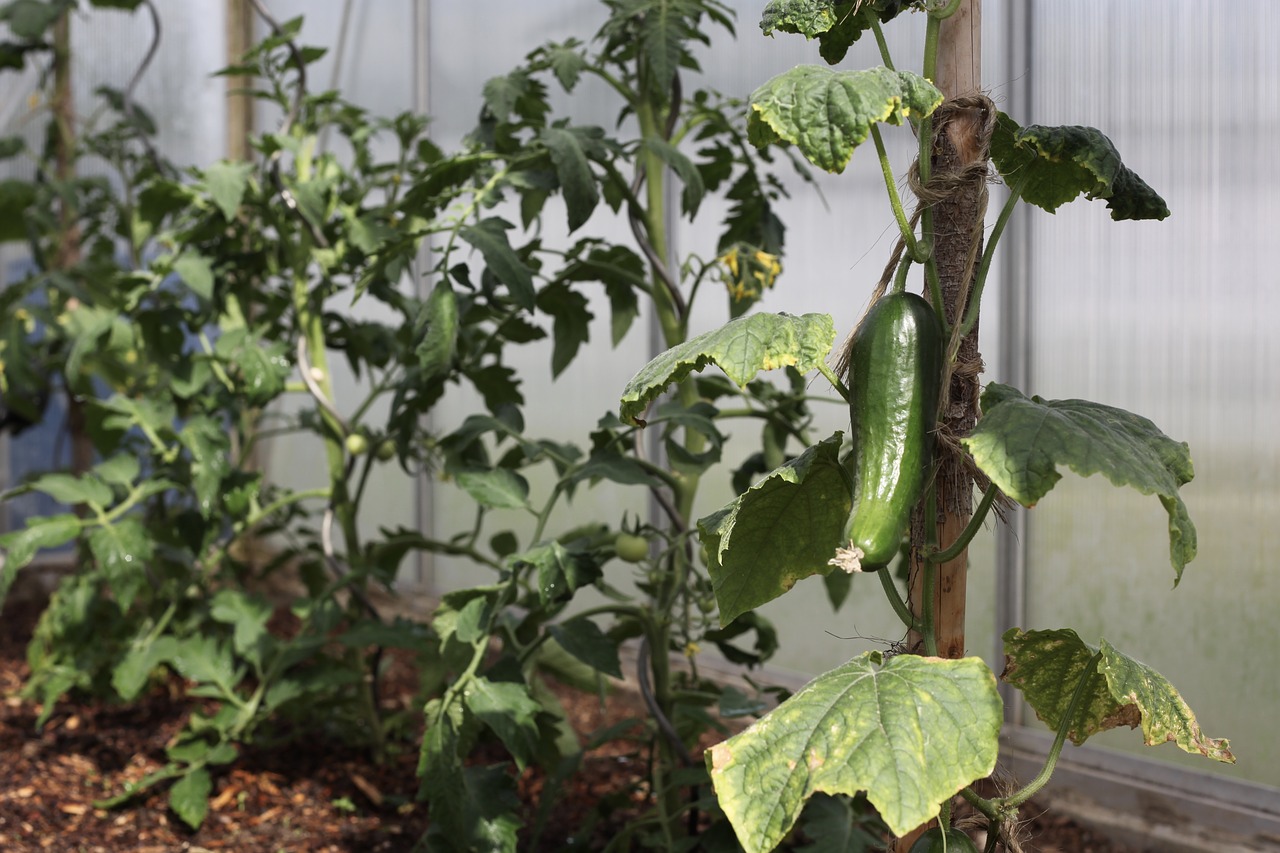
Planting Cucumbers: The Right Location & Soil
Both outdoor and greenhouse cucumbers grow best in a full sun location with loose, humus-rich and well-drained soil. In addition, the soil should always be evenly moist. As cucumbers are heavy feeders, the soil should be well fertilized.
Legumes such as beans or peas are suitable as a pre-culture for all pumpkin plants. They enrich the soil with valuable nitrogen. However, you should not have had potatoes or carrots in the same bed the previous year. There is a risk of diseases such as nematodes or fungi being transmitted. After pumpkin plants, you should plan a cultivation break of at least three years for your bed. Cruciferous plants such as cabbage or daikon are suitable as a successor crop. You can find More Tips on Companion Plants for Cucumbers in a Mixed Crop in this article.
Propagating and Planting Out Cucumbers
Outdoor Cucumbers
You should not start pre-breeding on the windowsill too early, otherwise your plants will grow too big before they can be planted out. From April, you can plant the seeds approx. 2 - 3 cm/0.8 - 1.2 in deep with the tip facing downwards in propagation pots. Important: your pots should not be too small (at least 10 cm in diameter), as the sensitive cucumbers do not like being repotted too often. I have also found that seedlings sown directly into larger pots grow faster and develop stronger shoots. Germination temperatures of approx. 20 °C/68 °F are ideal, later the seedlings like it a little cooler (e.g. on an unheated windowsill). As the cucumber originates from warm regions, it does not cope very well with the cold. Pre-grown seedlings should therefore only be planted outdoors after the Ice Saints (mid-May).
Greenhouse Cucumbers
Lettuce and snake cucumbers can be grown on the windowsill at the beginning of March and planted in the greenhouse from April. Here too, a sunny spot is best for the cucumbers. Snake cucumbers can also be grown outdoors, but are not as productive there. In this case, proceed in the same way as for other outdoor cucumbers.
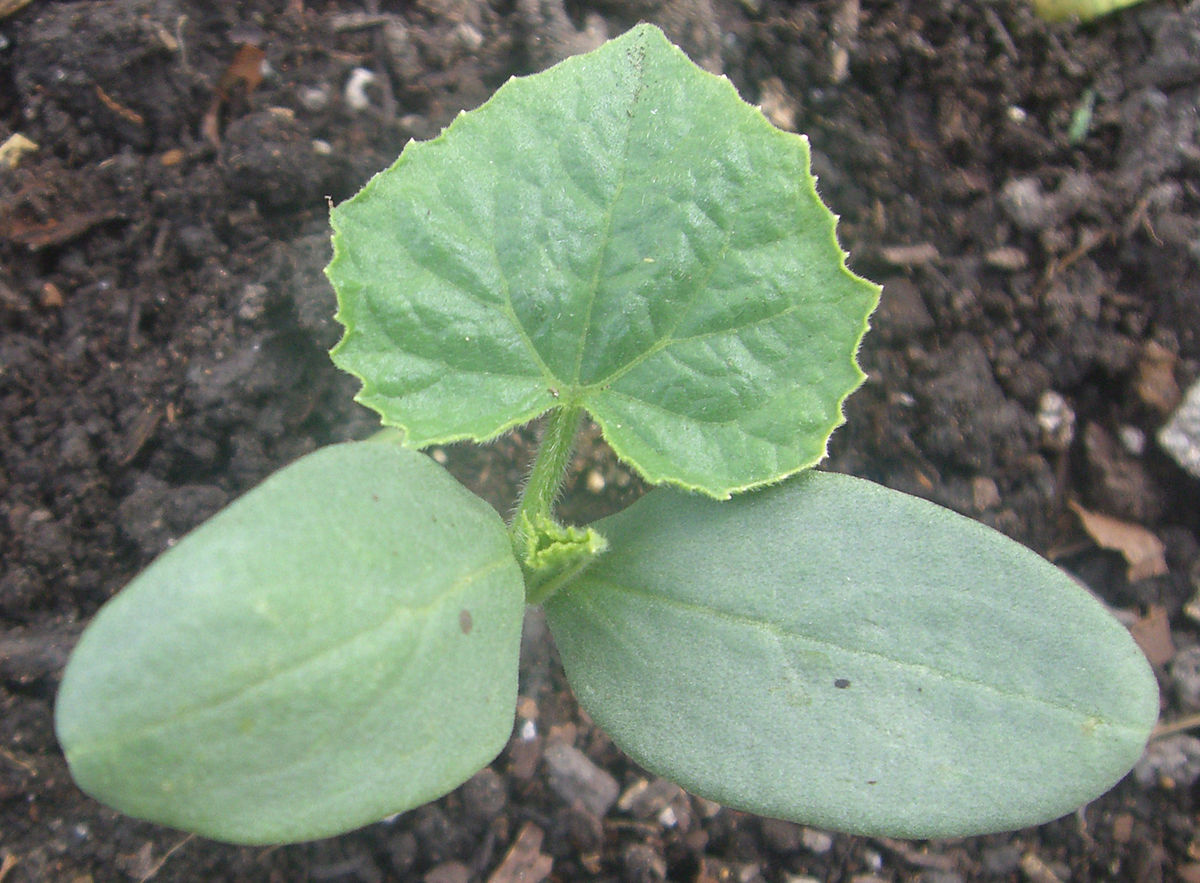
Sowing Cucumbers Directly in the Open Field
You can sow greenhouse cucumbers directly in the greenhouse at the beginning of April. Outdoors, this is possible from the beginning of May to the end of July. As the plants usually become very sprawling, make sure they are planted at least 40 cm/15.7 in apart. Many gardeners choose a mixture of direct-sown and pre-grown cucumbers so that they can be harvested over a longer period of time. I only sow directly into the bed, as I only have a few windowsills and the "place in the sun" is usually reserved for my tomato pre-breeding.
Companion Planting Plans With Cucumbers: Ideas and Examples
Cucumbers are particularly well-suited for companion planting. You can either let them sprawl as ground cover or train them to climb a trellis. This saves space in the bed, allowing you to sow even more ground cover plants like lettuce or dill.
Fertilizing and Caring for Cucumbers: Tips for Healthy Plants
Cucumbers grow best in a well-prepared bed. To do this, you can generously work compost, mature manure or horn shavings into the soil in spring or fall. Green manure in the summer of the previous year can also ensure nutrient-rich soil. According to Charles Dowding's no-dig method, a layer of compost about 2.5 cm/1 in thick is sufficient to prepare and fertilize the soil for the season. However, if the soil is poor and low in humus, a layer up to 15 cm/5.9 in thick may be required.
If you want to start direct sowing a little earlier, you can create a "floor heating" for your cucumber plants. To do this, dig a pit in the middle of your planned cucumber bed at the beginning of April. Fill it with horse manure. Add the excavated soil mixed with compost on top. As the horse manure rots, it releases a lot of heat, which coats and protects the roots of the cucumbers. With this old trick, you can sow your cucumbers directly into the open ground a month earlier (at the beginning of April). During the cucumber's growth phase (May-July), you can fertilize them up to three times with comfrey or nettle manure to strengthen the plant.
Watering Cucumbers Correctly
Cucumbers also like it moist. A regular watering routine is particularly important on hot days, as cucumbers quickly become bitter if conditions are too dry. It is best to water with lukewarm water as early as possible in the morning to avoid the formation of bitter substances. As with almost all crops, we also recommend applying a layer of mulch to the soil. This keeps the moisture in the soil for longer and prevents evaporation. It also keeps your cucumbers clean and allows nutrients from the mulch material to enter the soil. You can simply use straw or fresh grass cuttings for this. And remember: the crops in the greenhouse also love mulch!
Attaching a Climbing Support for Cucumbers
Most outdoor cucumbers grow easily without a trellis and crawl along the ground. Nevertheless, you can guide them up a trellis or cane. To do this, you can wrap the new shoots around your trellis every week. This has several advantages: Firstly, the cucumbers stay nice and clean. In addition, you can usually easily see the hanging fruit and there are no giants. You also save space if the cucumbers grow upwards. For example, you can plant dill underneath them. In contrast, snake cucumbers should always be directed upwards. In the greenhouse, for example, this is possible with tightly stretched strings.
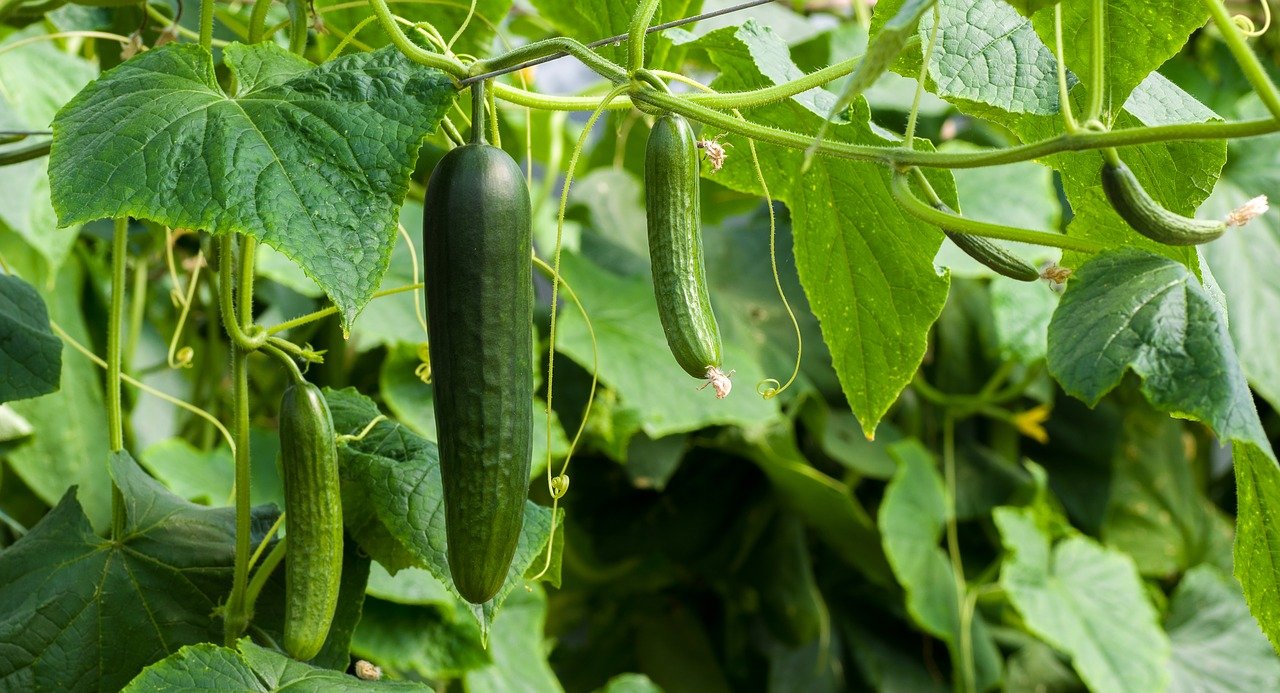
Cutting Cucumbers
Cucumbers do not necessarily need to be cut back, but some gardeners do. If you guide your cucumbers upwards on a stick, you can cut off all side shoots from a height of approx. 80 cm/31.5 in after the first leaf attachment of the respective shoot. This will strengthen the main shoot, which should climb up the scaffolding. For outdoor cucumbers without scaffolding, however, cut the main shoot after the fifth or sixth leaf. This prevents the main shoot from becoming too long and overgrowing other crops.
Pinch Out Cucumbers and Remove Male Flowers
In some cucumber varieties, removing male flowers can improve fruit quality as it prevents unnecessary pollination and the associated bitter fruit. This is particularly relevant for self-pollinating varieties. Careful removal of male flowers can lead to a harvest of tastier cucumbers. You can recognize the male blossom by the lack of fruit set behind the blossom.
Cucumber thinning refers to the removal of side shoots on the plant to control growth and focus energy on developing strong, healthy fruit. This technique is often used with cucumbers grown in a greenhouse or on a windowsill to promote a bountiful harvest. By selectively removing the side shoots, the plant can better focus its energy on the main shoots and fruit formation, resulting in larger and tastier cucumbers.
Diseases of Cucumbers
Cucumber plants are particularly sensitive to fungal diseases and susceptible to Powdery and Downy Mildew, gray mold and sclerotina wilt. Grafting seedlings are often offered in nurseries. Here, the upper part of a desired variety is grafted onto a root with a cut stem. If the rootstock and the top come from the same plant family, they will normally grow together. The fig leaf pumpkin(Cucurbita ficifolia) is often used as the rootstock. This species is resistant to many soil-borne diseases such as Fusarium. The rootstock also has strong root growth, which increases the success of the cucumber harvest.

Check out Our Plant Library
Our library provides information on each variety, including growing seasons, planting and harvesting tips. You can also find good and bad companion plants to help you plan a mixed crop.
Check out the Plant Library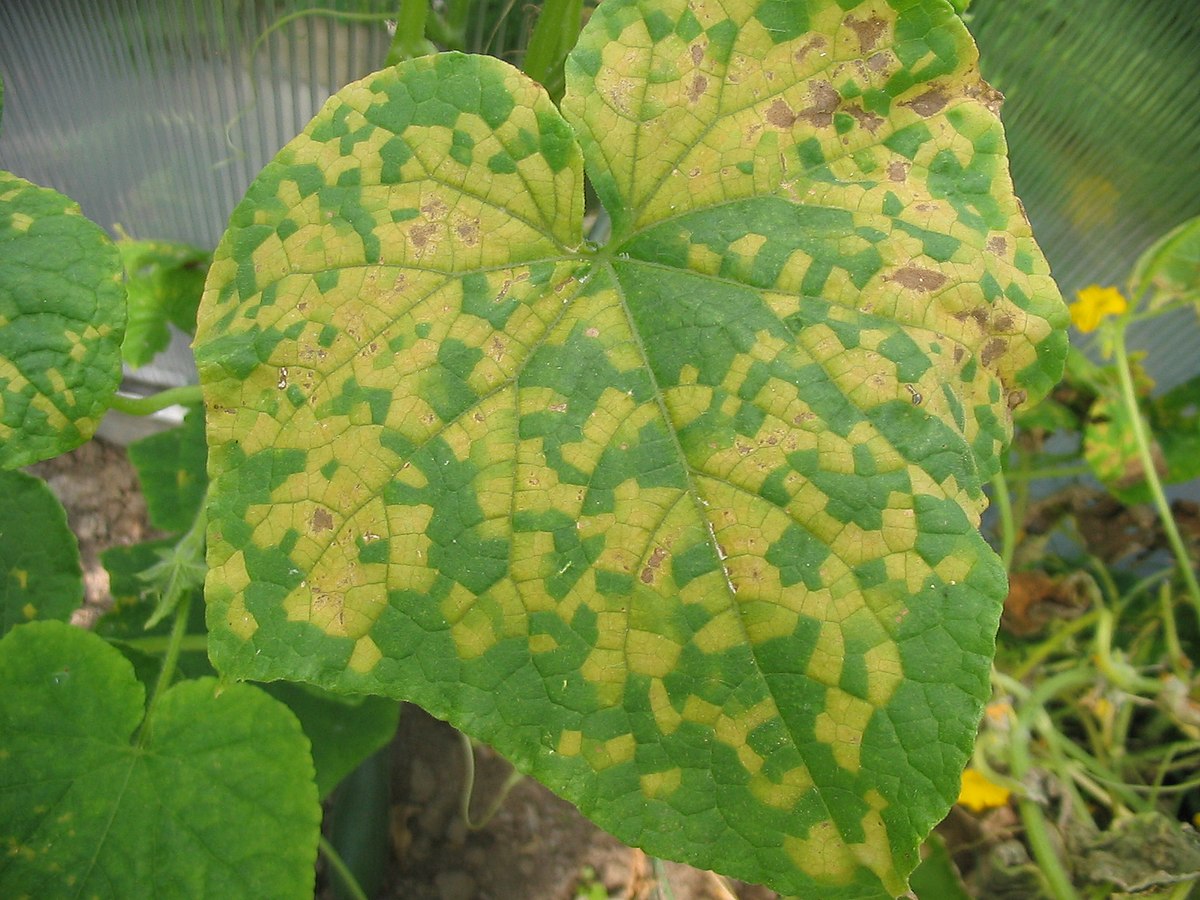
Recognizing and Combating Mildew
Powdery mildew is a fungus that spreads as a white, easily wipeable coating on the upper side of the leaves, even in dry weather. The fungus is easily spread by wind and quickly infects all other parts of the plant. Downy mildew, on the other hand, tends to spread in cold, damp weather. The whitish fungal mycelium forms on the underside of the leaves, while the upper side of the leaves develops yellow-brown spots. Infested parts of the plant should be removed. Spraying with garlic, onion or horsetail tea, diluted milk or diluted vinegar, dusting with rock dust and neem oil can help. Some biological pesticides are also available from specialist retailers.
Recognizing and Combating Grey Mould
This fungal disease (Botrytis cinerea) is recognizable as a grey, dusty spot on the plant. Infection occurs via dead plant parts, usually from weak plants. Dead plant parts should be removed as a preventative measure. In addition, sufficient air exchange should be ensured in the greenhouse. Splashing water should also be avoided. Watering with nettle or horsetail manure can help. Other biological plant protection products are available from DIY stores.
Preventing and Combating Sclerotina Wilt
This classic greenhouse disease occurs when humidity is too high and conditions are rather cool. If infected, you should remove the entire plant and ensure that the spores are not spread (avoid shaking!). The soil around the infected plant should also be replaced. Important: Do not put the soil and plant in the compost, otherwise the fungus will spread throughout the garden! A mixed culture with garlic can help as a preventative measure. As a follow-up crop, no susceptible species should be planted in the bed (tomatoes, celery, lettuce, beans, eggplants, peppers).
Grafting Cucumbers for More Robust Plants
Grafting cucumbers is an exciting method of obtaining more resistant and higher-yielding plants. The desired cucumber plant is grafted onto a robust rootstock, which often has better resistance to diseases and pests. This technique can increase the vitality of the cucumber plants and lead to a richer harvest.
Harvesting and Storing Cucumbers
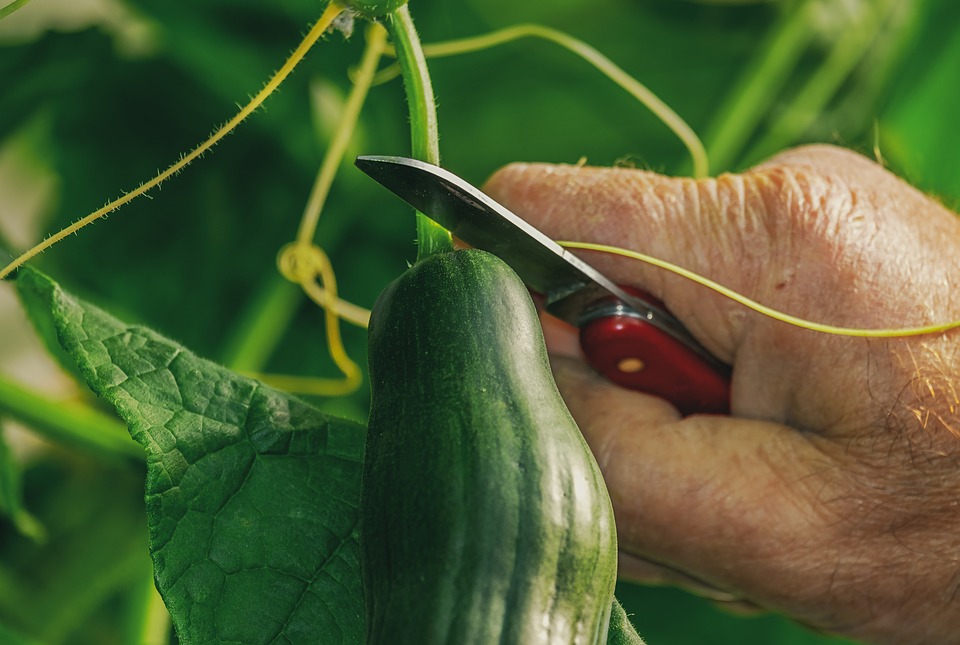
If the conditions are right, you can harvest your first cucumbers just eight to nine weeks after sowing. The great thing is that harvesting the cucumbers also stimulates flower production. This means that the more you harvest, the more will grow back! In a good season, you can harvest almost daily. Use a sharp knife to avoid damaging the plant. The young cucumbers are usually the tastiest, as their skin and flavor are still nice and tender. Once harvested, you can store cucumbers for a good week in cool conditions. However, the fridge is not the best place to store them as cucumbers are sensitive to the cold. Temperatures between 10 and 13 °C/50 and 55 °F are ideal. So if you have a cool, dark cellar, you should store your cucumbers here. Freezing cucumbers is not possible due to their high water content, otherwise they will become mushy.
You can find out how to preserve cucumbers for longer in our article Pickling Cucumbers.
I hope I was able to give you a good overview of cucumbers. If you have any questions or comments, please write to us at [email protected].
Want to get helpful gardening tips all year round and plan your own beds in the best possible way? Then register here or download the Fryd app for Android or iOS.
Fryd - Your digital bed planner
Cover picture by Julia Schwab on Pixabay
Source: Charles Dowding, #No Dig, 2023, Munich: Dorling Kindersley Verlag GmbH, Work instructions and descriptions

Isabell
Isabell studies agricultural sciences and loves to be surprised by nature and its complexity again and again. Herbs - whether gathered wild or in the garden - are her passion.
Learn MoreCurrent Topics in the Community

Liked 3 times
Have a relaxing and happy festive season! Looking forward to the upcoming gardening season here in the community 😊⭐️🎄✨
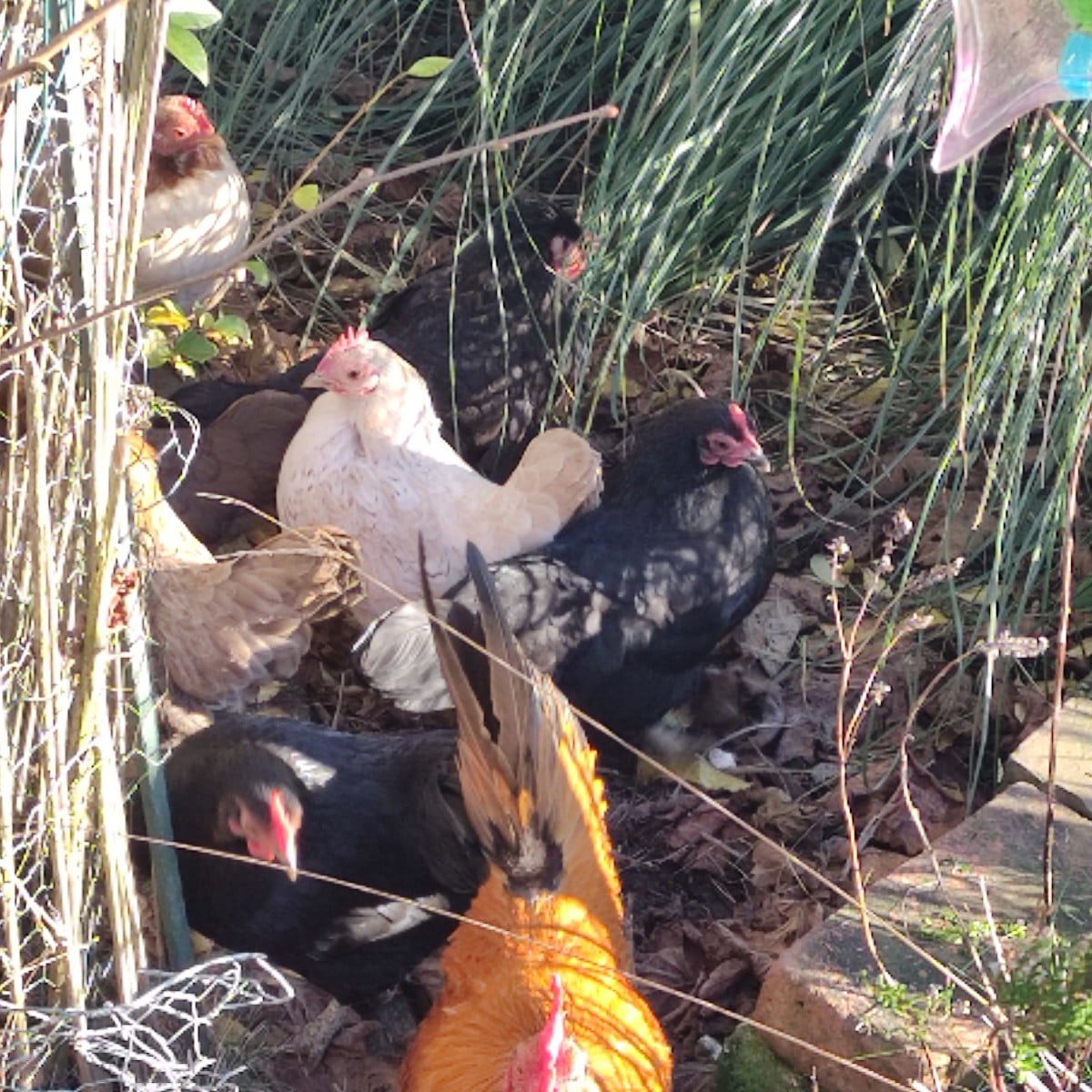
Liked 3 times
The chickens are not happy about the cold weather.
Show 1 answer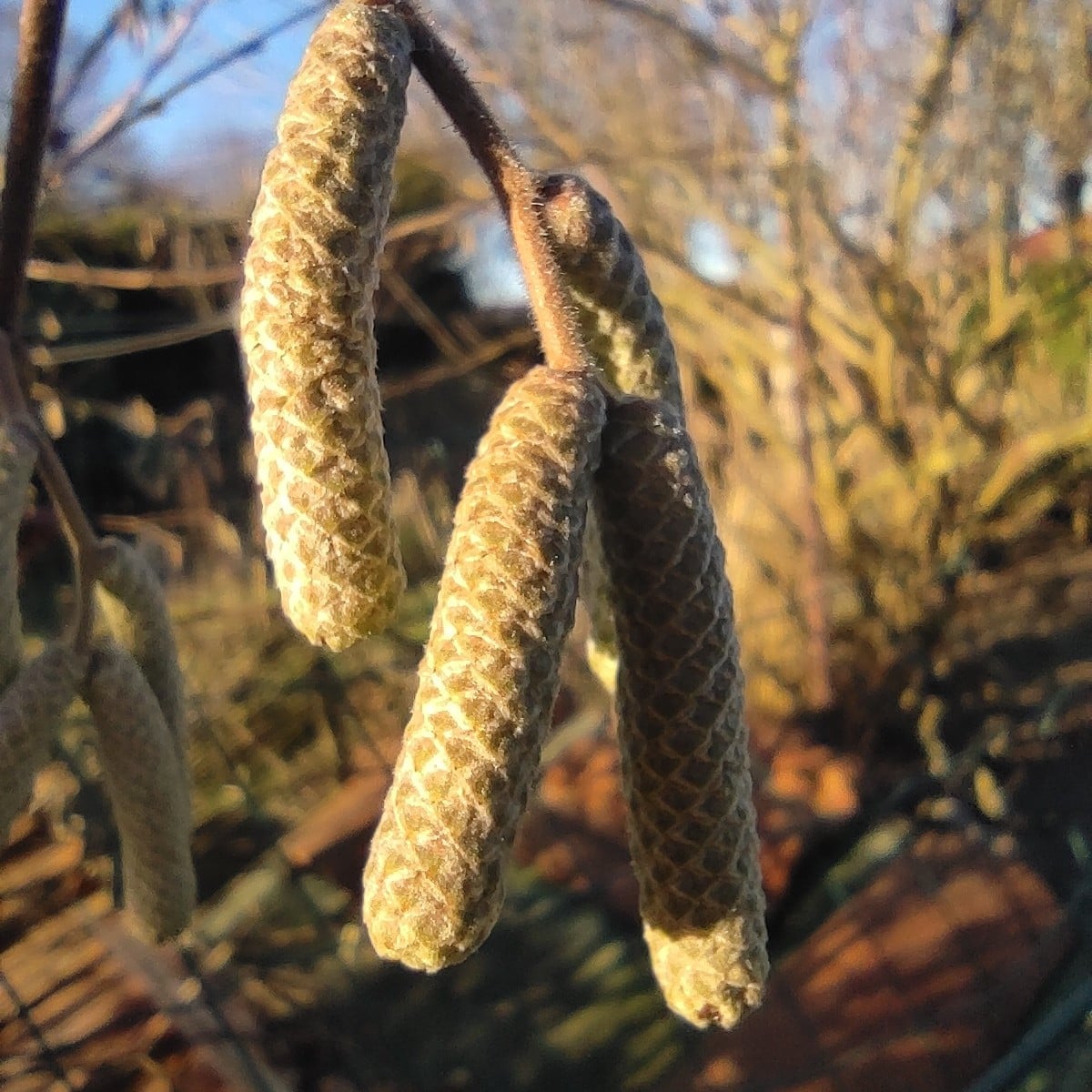
Liked 1 times
Without words
Show 1 answerPopular Articles

Overwintering Parsley: How to Do It Successfully

How to Grow Lettuce in Winter: Varieties, Sowing, Harvesting

Growing Sage Plant: Tips for Sowing and Harvesting

What Herbs Can Be Planted Together?

Create & Design a Permaculture Garden

Overwintering Plants: Tubs, Pots and Raised Beds

Pruning, Fertilizing & Propagating Currants: Care Tips

Pruning Raspberries: How to Do It

Vegetable Garden With Greenhouse: How to Use Greenhouse Effect

Winterizing Beds and the Garden: How to Do It
FAQ
Cucumbers should be planted in spring after the Ice Saints, around mid-May, when there is no longer any risk of frost. Greenhouse cucumbers can be planted in the greenhouse from as early as April.
Bitter cucumbers can be caused by environmental stress such as irregular watering, high temperatures or a lack of nutrients. It can also have genetic causes.
Cucumbers are ripe when they have reached their typical size and color. The ripening time depends on the variety and is usually between 50-70 days after planting.
Cucumbers can be started 3-4 weeks before the planned planting date in the open field or greenhouse, i.e. around March to April. Cucumber seedlings grow quite quickly, which is why you should not start sowing too early.